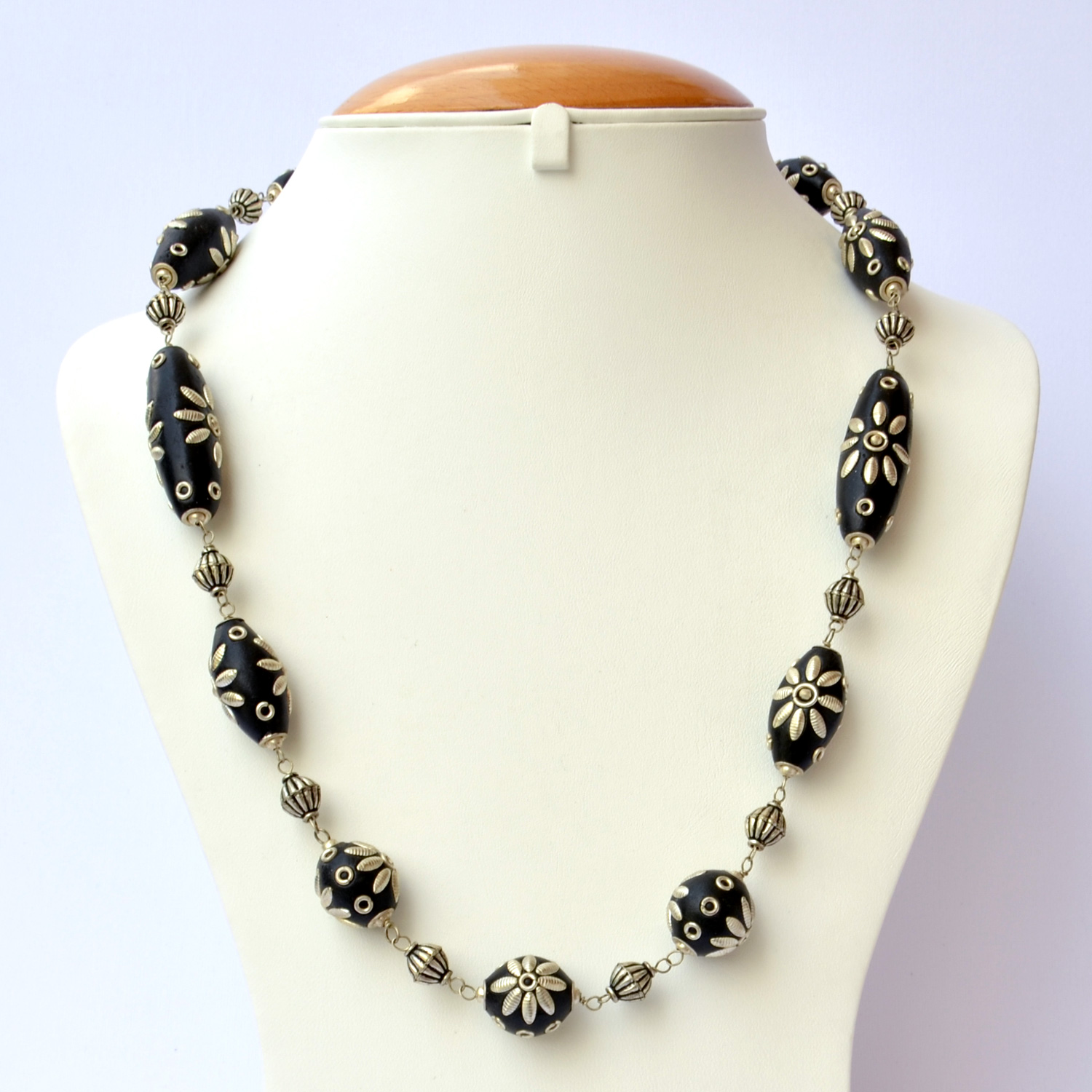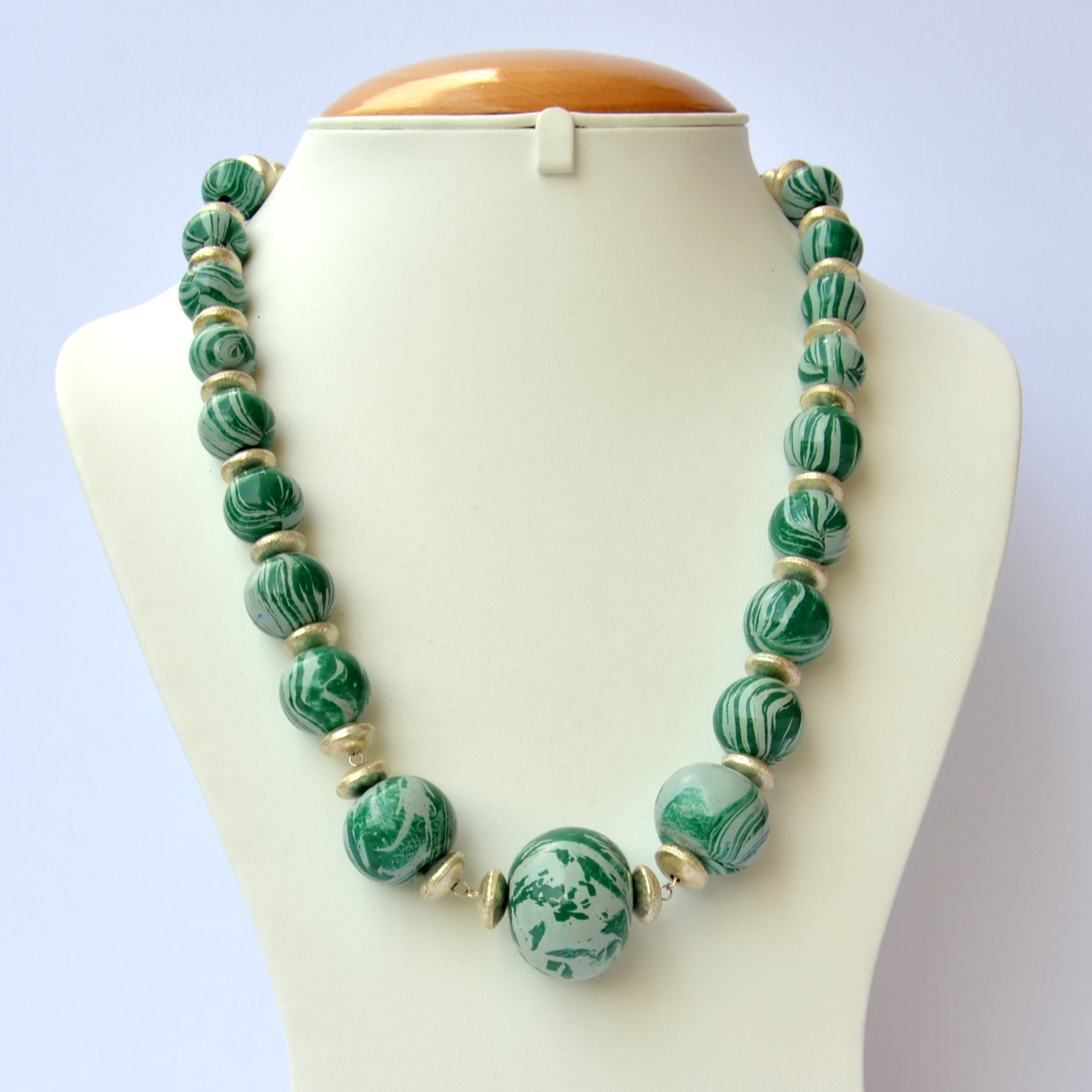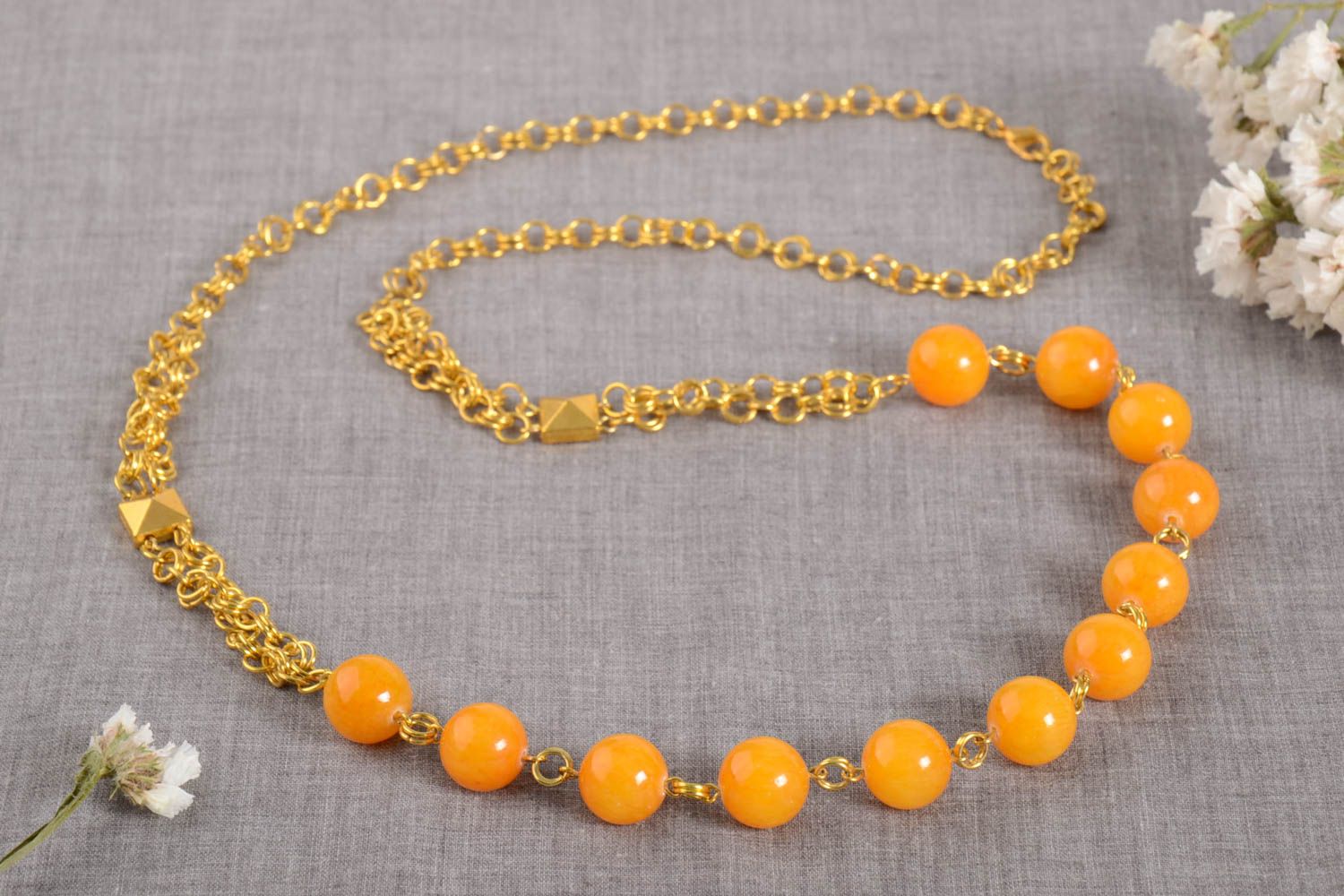Handmade jewellery designs with beads – Handmade jewelry designs with beads have captivated the world of fashion for centuries, offering a unique and expressive medium for personal adornment. From delicate necklaces to statement earrings, beaded jewelry has the power to transform an outfit and reflect the wearer’s personality.
With an endless array of beads to choose from, ranging from glass and gemstones to metal and ceramic, the possibilities for creating stunning jewelry pieces are limitless. This guide will delve into the fascinating world of handmade jewelry designs with beads, exploring bead types, design principles, and techniques to inspire your own creative endeavors.
Introduction to Handmade Jewellery Designs with Beads
In the realm of contemporary fashion, handmade jewellery has emerged as a captivating and expressive art form. Among the myriad of handcrafted adornments, beaded jewellery stands out for its timeless appeal and boundless versatility. Beads, with their diverse shapes, sizes, colors, and materials, offer endless possibilities for creative expression, allowing artisans to craft unique and captivating pieces that resonate with personal style and sentiment.
The allure of beaded jewellery lies in its ability to transcend cultural and temporal boundaries. From ancient civilizations to modern-day runways, beads have been an integral part of human adornment, adorning everything from necklaces and bracelets to earrings and hair accessories.
The intricate techniques employed in beadwork, such as stringing, weaving, and embroidery, add further depth and dimension to these creations, making each piece a testament to the artisan’s skill and artistry.
Beading Techniques and Their Applications
The world of beading encompasses a vast array of techniques, each with its own distinct aesthetic and applications. Stringing, one of the most fundamental methods, involves threading beads onto a flexible material, such as thread, wire, or leather, to create simple yet elegant necklaces, bracelets, and earrings.
Weaving techniques, on the other hand, introduce a more intricate dimension, allowing artisans to create intricate patterns and textures by interlacing beads with threads or wires.
Embroidery, a technique commonly associated with textiles, finds its way into the realm of beadwork as well. By incorporating beads into embroidered designs, artisans can add a touch of sparkle and dimension to garments, accessories, and home décor items. The versatility of beading techniques empowers artisans to explore a wide spectrum of styles, from delicate and feminine to bold and statement-making, ensuring that there is a beaded design to suit every taste and occasion.
Exploring Bead Types and Materials

The world of beads is vast and diverse, offering a myriad of options for jewelry designers. Each type of bead possesses unique properties, advantages, and aesthetic qualities that contribute to the overall design and appeal of a piece.
To help you navigate this captivating realm, we present a comprehensive table showcasing the most popular bead types and their distinct characteristics:
Bead Types and Properties
| Bead Type | Description | Advantages | Aesthetic Qualities |
|---|---|---|---|
| Glass | – Made from molten glass
|
– Durable and affordable
|
– Adds color and brilliance to jewelry
|
| Gemstone | – Formed from minerals or organic materials
|
– Durable and valuable
|
– Adds a touch of elegance and sophistication
|
| Metal | – Made from various metals such as silver, gold, or copper
|
– Durable and versatile
|
– Creates a modern and edgy look
|
| Ceramic | – Made from clay that is fired at high temperatures
|
– Durable and affordable
|
– Creates a rustic or earthy look
|
Design Principles for Beaded Jewellery

Crafting exquisite beaded jewellery demands a deep understanding of design principles. These principles guide the selection, arrangement, and combination of beads to create visually stunning pieces that evoke emotions and complement personal style.
Colour Theory
Colour theory plays a pivotal role in beaded jewellery design. It involves understanding the relationships between colours, their impact on perception, and how they can be harmoniously combined to create desired effects. The colour wheel serves as a valuable tool for designers, providing a visual representation of colour relationships and harmonies.
- Complementary Colours:Colours that lie opposite each other on the colour wheel, such as red and green, create a high contrast and visually striking effect.
- Analogous Colours:Colours that are adjacent to each other on the colour wheel, such as blue, blue-green, and green, create a harmonious and cohesive look.
- Triadic Colours:Colours that are evenly spaced around the colour wheel, such as red, yellow, and blue, form a visually balanced and vibrant combination.
Balance, Proportion, and Symmetry
Achieving balance, proportion, and symmetry in beaded jewellery design is essential for creating visually pleasing pieces. Balance refers to the distribution of visual weight within a design, ensuring that it does not appear top-heavy or unbalanced. Proportion relates to the size and scale of different elements within a design, creating a sense of harmony and unity.
Symmetry involves the mirror-image arrangement of elements, resulting in a formal and elegant look.
Selecting and Combining Beads
The selection and combination of beads play a crucial role in achieving desired visual effects. Consider the following tips:
- Shape and Size:Varying the shapes and sizes of beads adds visual interest and texture to a design.
- Colour and Finish:Experiment with different colour combinations and bead finishes, such as matte, metallic, or iridescent, to create unique and eye-catching pieces.
- Texture and Pattern:Incorporate beads with different textures and patterns to add depth and dimension to a design.
- Focal Beads:Use larger or more ornate beads as focal points to draw attention to specific areas of a design.
Techniques for Beading: Handmade Jewellery Designs With Beads

Beading techniques involve manipulating beads to create jewellery. Mastering these techniques is crucial for crafting exquisite beaded designs. Let’s explore the fundamental beading techniques and their applications.
Stringing
Stringing is the simplest beading technique, involving threading beads onto a string or wire. This method allows for quick and easy creation of necklaces, bracelets, and earrings. It’s ideal for designs that require flexibility and movement.
Knotting
Knotting is a versatile technique that adds security and visual interest to beaded designs. By tying knots between beads, you can create intricate patterns and prevent beads from falling off. Knotting is commonly used in necklaces, bracelets, and earrings, providing a secure and durable construction.
Wire Wrapping
Wire wrapping involves bending and shaping wire to create loops, coils, and other decorative elements that hold beads in place. This technique offers greater control over the design and allows for the incorporation of intricate wirework into beaded jewellery. Wire wrapping is suitable for creating pendants, earrings, and other jewellery pieces that require a more structured and sophisticated look.
| Technique | Advantages | Limitations |
|---|---|---|
| Stringing | – Quick and easy
|
– Less secure than other techniques
|
| Knotting | – Secure and durable
|
– Can be time-consuming
|
| Wire Wrapping | – Versatile and decorative
|
– Requires more skill and practice
|
Inspiration and Trends
Drawing inspiration from diverse sources, contemporary beaded jewellery designers are pushing the boundaries of creativity and craftsmanship. From traditional techniques to innovative materials and designs, the world of beaded jewellery is constantly evolving.
One notable trend is the incorporation of unconventional materials, such as recycled glass, ceramic, and even wood, into beaded designs. These elements add unique textures, colors, and patterns, creating one-of-a-kind pieces that stand out from the crowd.
Gallery of Stunning Handmade Jewellery Designs with Beads
Explore a gallery of exquisite handmade jewellery designs with beads, showcasing the diverse range of styles and techniques employed by contemporary artists. Each piece is a testament to the skill and artistry of the designer, capturing the essence of creativity and craftsmanship.
From delicate necklaces adorned with intricate beadwork to bold earrings featuring statement-making beads, the gallery offers a glimpse into the boundless possibilities of beaded jewellery. Each design tells a unique story, inviting the wearer to embrace their individuality and express their personal style.
Emerging Trends in Beaded Jewellery, Handmade jewellery designs with beads
Emerging trends in beaded jewellery reflect a growing emphasis on sustainability, personalization, and cultural influences. Designers are increasingly turning to eco-friendly materials and ethical sourcing practices, creating pieces that are both beautiful and responsible.
Personalization is another key trend, with designers offering custom-made jewellery that caters to the unique tastes and preferences of their clients. From birthstone necklaces to engraved charms, personalized beaded jewellery holds sentimental value and becomes a cherished keepsake.
Links to Reputable Online Resources and Social Media Accounts
For further inspiration and to stay abreast of the latest trends in beaded jewellery, explore reputable online resources and follow social media accounts dedicated to the craft. These platforms provide a wealth of information, including tutorials, interviews with designers, and showcases of stunning beaded creations.
- Beading Daily: https://www.beadingdaily.com/
- Beadwork Magazine: https://www.beadworkmagazine.com/
- Bead Society of Great Britain: https://www.beads.org.uk/
- The Beading Gem’s Journal: https://www.beadinggems.com/
Tips for Creating Unique Pieces
In the realm of beaded jewellery making, experimentation and personalization are paramount. Embrace your creativity and develop your distinctive style by sourcing unique beads, combining unconventional materials, and exploring new design ideas.
Sourcing Unique Beads
- Explore local bead shops, markets, and online retailers for hidden gems and unusual bead varieties.
- Consider repurposing vintage or antique beads for a touch of history and character.
- Attend beading workshops or classes to discover new beading techniques and bead suppliers.
Combining Unconventional Materials
- Incorporate natural elements such as gemstones, shells, or wood beads for organic appeal.
- Experiment with metal accents, leather cords, or fabric scraps to add texture and dimension.
- Don’t be afraid to mix and match different materials to create eclectic and eye-catching pieces.
Exploring New Design Ideas
- Draw inspiration from nature, art, or your personal experiences.
- Sketch out your design ideas or use a beading software to visualize your creations.
- Experiment with different bead shapes, sizes, and colors to create unique patterns and textures.
Final Summary

Whether you’re a seasoned jewelry maker or just starting your journey, handmade jewelry designs with beads offer a rewarding and fulfilling creative outlet. Embrace the joy of experimentation, let your imagination soar, and create unique pieces that will be cherished for years to come.
Detailed FAQs
What are the most popular bead types used in handmade jewelry?
Glass, gemstone, metal, and ceramic beads are among the most commonly used in handmade jewelry due to their versatility, durability, and aesthetic appeal.
How can I learn different beading techniques?
There are numerous online resources, books, and workshops available to teach various beading techniques, including stringing, knotting, and wire wrapping.
What are some tips for creating unique handmade jewelry designs with beads?
Experiment with different bead shapes, sizes, and colors to create one-of-a-kind pieces. Combine unconventional materials, such as leather or fabric, to add texture and interest. Don’t be afraid to break away from traditional designs and let your creativity guide you.
